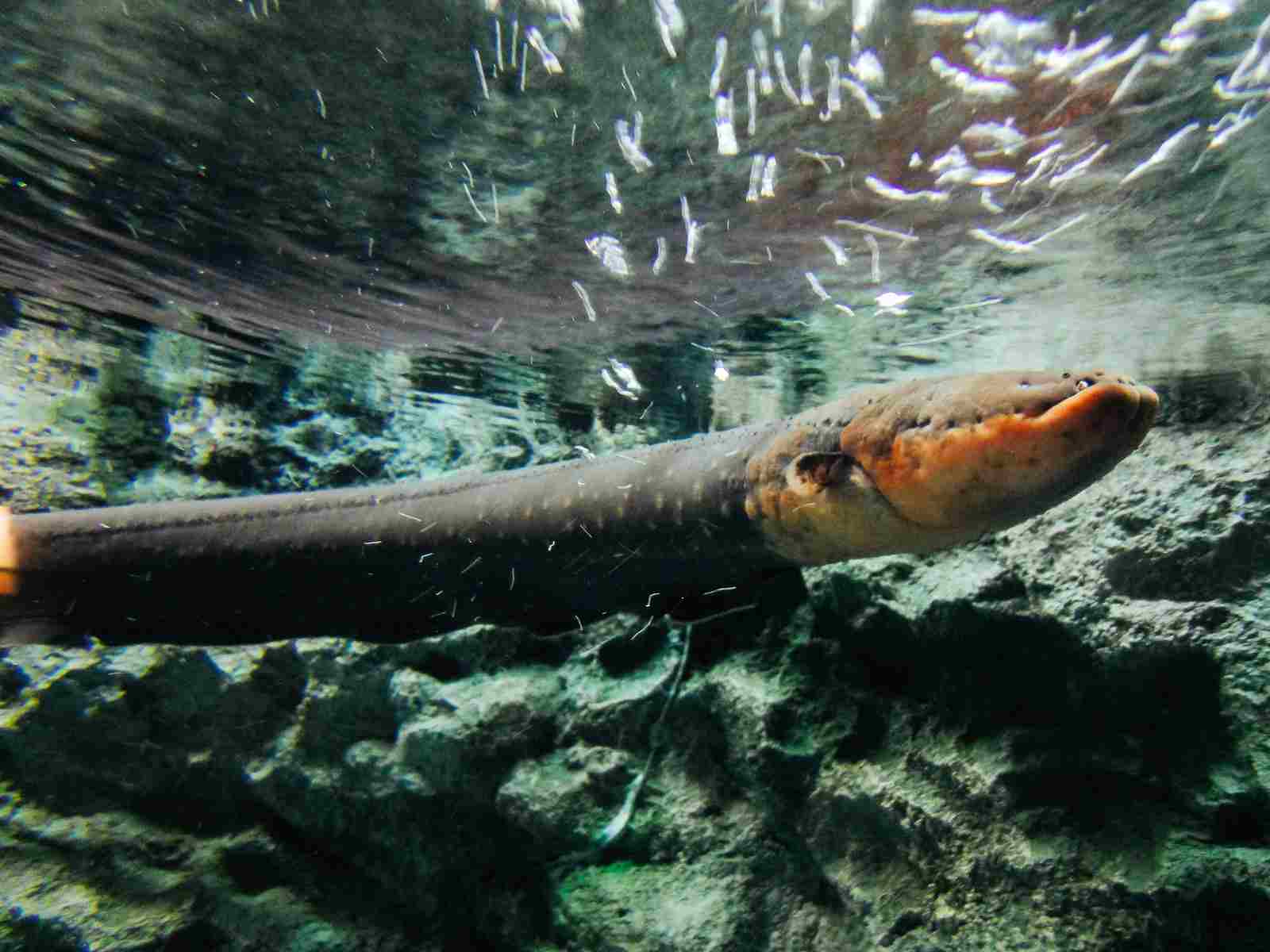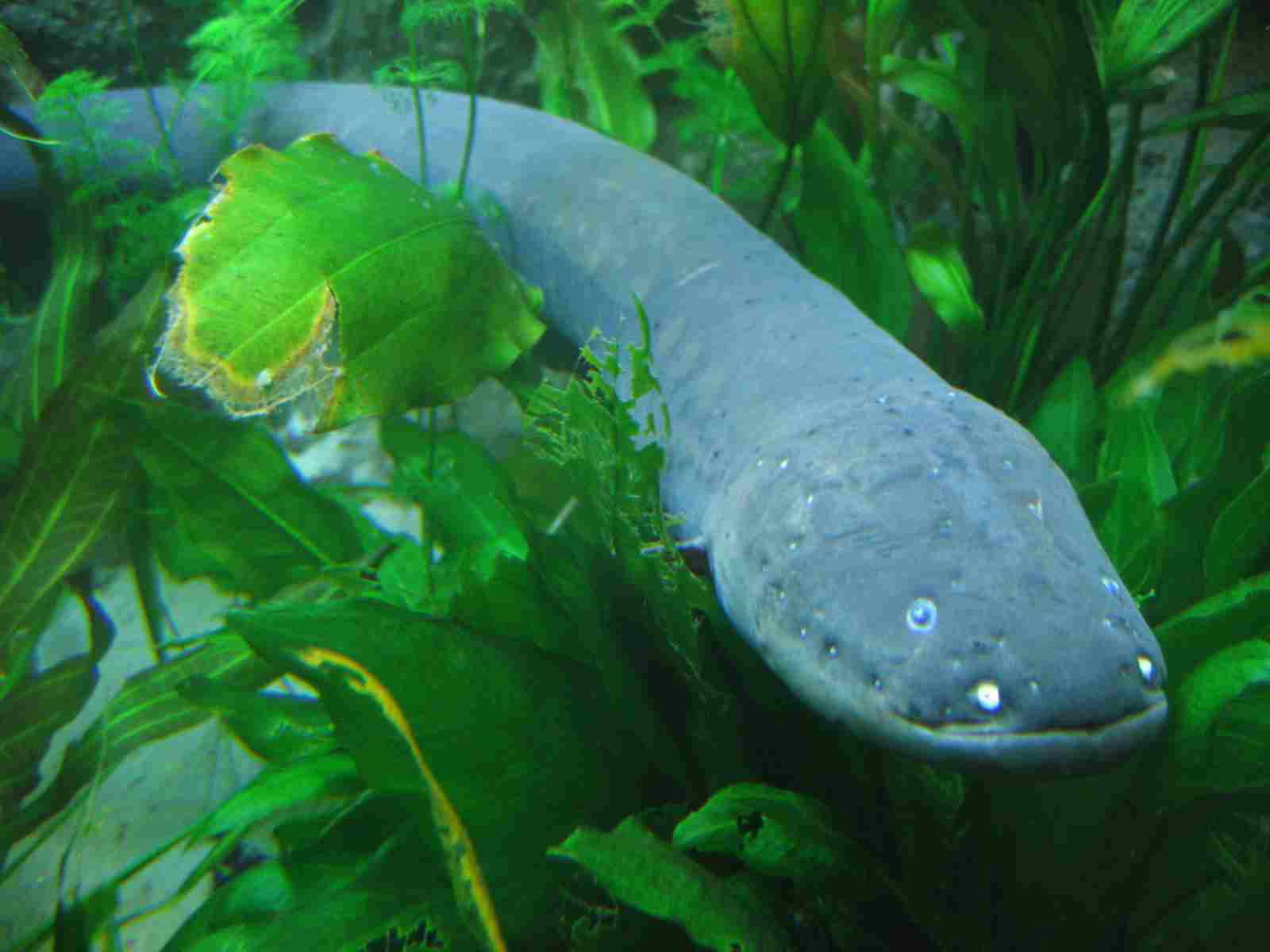Can You Eat Electric Eels? Assessing Electric Eels as Food for Humans
Electric eels, although edible, are not commonly consumed by humans for several reasons. Firstly, capturing electric eels can be extremely dangerous. These creatures have the ability to generate electric shocks of up to 600 volts, which can cause serious harm or even death. Therefore, the risk involved in catching electric eels outweighs the potential benefits of consuming them.
Secondly, electric eels possess minimal edible flesh. Their bodies are primarily composed of organs that produce electricity, leaving little meat for consumption. This makes them an impractical food source, as the effort required to catch and prepare them does not yield a substantial amount of edible flesh.
Furthermore, electric eels have relatively low nutritional value. They are not a significant source of essential nutrients such as protein, vitamins, or minerals. Therefore, from a nutritional standpoint, there are better options available for human consumption.
Lastly, the general public perception of electric eels as dangerous and potentially lethal creatures also contributes to their lack of popularity as a food source. Many people are hesitant to consume an animal that is known for its ability to deliver powerful electric shocks.
Are Electric Eels Edible?
Yes, technically electric eels are edible. However, they are not commonly consumed by humans as a source of food. There are several reasons why electric eels are not a popular choice for consumption.
Firstly, capturing electric eels can be extremely dangerous. These creatures have the ability to generate electric shocks of up to 600 volts, which can cause serious harm or even death. Therefore, the risk involved in catching electric eels outweighs the potential benefits of consuming them. The danger associated with capturing electric eels makes it an unappealing option for most people.
Secondly, electric eels possess minimal edible flesh. Their bodies are primarily composed of organs that produce electricity, leaving little meat for consumption. This makes them an impractical food source, as the effort required to catch and prepare them does not yield a substantial amount of edible flesh. Considering the limited amount of edible flesh available, it is not worth the time and effort to pursue electric eels as a food source.
Furthermore, electric eels have relatively low nutritional value. They are not a significant source of essential nutrients such as protein, vitamins, or minerals. From a nutritional standpoint, there are better options available for human consumption. Choosing other food sources that provide a higher nutritional value is a more sensible choice for maintaining a balanced diet.
Lastly, the general public perception of electric eels as dangerous and potentially lethal creatures also contributes to their lack of popularity as a food source. Many people are hesitant to consume an animal that is known for its ability to deliver powerful electric shocks. The fear and stigma surrounding electric eels make them an unattractive option for consumption.
Why Electric Eel is Not Eaten as a Food Source by Humans
1). Danger of Capture
Electric eels can be dangerous to capture, which is one of the reasons why they are not commonly eaten as a food source by humans. The process of capturing electric eels can be risky and requires specialized knowledge and equipment.
Electric eels are known for their ability to generate electric shocks, which they use for hunting and self-defense. These shocks can be powerful enough to stun or immobilize their prey, and they can also cause harm to humans. When attempting to capture an electric eel, there is a risk of receiving a strong electric shock, which can be potentially life-threatening.
In addition to the danger of electric shocks, electric eels are also difficult to handle due to their slippery and slimy skin. Their bodies are covered in a layer of mucus, which makes them difficult to grasp and hold onto. This further increases the risk of injury during the capture process.
Furthermore, electric eels are typically found in freshwater habitats such as rivers and swamps, which can present additional challenges for capture. These environments can be treacherous, with fast currents, deep waters, and hidden obstacles. Capturing electric eels in such environments requires expertise in navigating and working safely in these conditions.
Considering the risks involved in capturing electric eels, it is understandable why they are not commonly sought after as a food source. The dangers associated with capturing electric eels outweigh the potential benefits of consuming them. As a result, electric eels are primarily studied for scientific research purposes rather than being harvested for food.

2). Possession of Minimal Edible Flesh
Electric eels are known to have very bony bodies and possess minimal edible flesh. The majority of their body is composed of bones and cartilage, making it challenging to extract substantial amounts of edible meat. This lack of edible flesh is one of the primary reasons why electric eels are not commonly consumed as a food source by humans.
The skeletal structure of electric eels is highly developed, with a significant portion of their body consisting of bones. These bones provide support and protection for the eel, but they also contribute to the limited amount of edible flesh available. When compared to other fish or seafood options, electric eels simply do not offer a substantial amount of meat that can be consumed.
In addition to their bony composition, electric eels also have minimal fleshy tissues. Their bodies are primarily made up of organs and other internal structures, leaving little room for edible muscle tissue. This lack of muscle tissue further reduces the amount of edible flesh that can be obtained from an electric eel.
While it is possible to extract some meat from an electric eel, the effort required to do so outweighs the potential reward. The amount of edible flesh obtained from an electric eel is minimal, making it an inefficient and impractical food source. This, combined with the dangers associated with capturing electric eels, contributes to their limited consumption by humans.
3). Relatively-low Nutritional Value
One of the main reasons why electric eels are not commonly consumed as a food source by humans is their relatively-low nutritional value. While they may possess some nutritional benefits, they do not offer the same level of sustenance as other fish or seafood options.
Electric eels are known to have a diet consisting mainly of small fish and invertebrates. As a result, their nutritional profile is not as diverse or rich as other marine creatures that feed on a wider range of organisms. This limited diet translates into a lower concentration of essential nutrients and vitamins in their flesh.
Furthermore, electric eels have a relatively-high fat content compared to other fish. While some fat is necessary for a balanced diet, excessive consumption of fatty foods can lead to health issues such as obesity and cardiovascular problems. Therefore, individuals seeking a healthier and more nutritious option may opt for fish with lower fat content.
In terms of protein content, electric eels do provide a decent amount. However, the quality of the protein may not be as high as in other fish species. The amino acid composition of their flesh may not be as complete or balanced, which can affect the body’s ability to utilize the protein effectively.
Additionally, electric eels are not a significant source of vitamins and minerals. While they may contain some essential nutrients, the levels are generally lower compared to other fish species. Individuals looking to meet their daily vitamin and mineral requirements may find more suitable options in other seafood choices.
4). General Public Perception
The general public perception of electric eels is largely influenced by their unique ability to generate electric charges. This distinctive characteristic sets them apart from other fish and makes them more commonly associated with danger rather than as a potential food source.
Due to the fear and apprehension surrounding electric eels, people are often reluctant to hunt or consume them like they would with other fish. The idea of encountering an electric eel and potentially being shocked by its powerful electric discharge is enough to deter most individuals from considering it as a viable food option.
Furthermore, electric eels are not commonly seen or marketed as edible food animals. Unlike other fish species that are readily available in markets and restaurants, electric eels are not typically included in the selection of seafood options. This lack of exposure and accessibility further contributes to the perception that electric eels are not meant to be consumed by humans.
The general public’s perception of electric eels as dangerous and non-edible animals is a significant reason why they are not commonly eaten as a food source. The combination of their electric capabilities and the lack of familiarity with their culinary potential creates a barrier that prevents people from considering electric eels as a viable food option.
What Does Electric Eel Taste Like?
The taste of electric eel is often described as not very fishy, but rather similar to lobsters, catfish, or raw salmon. This unique flavor profile sets electric eel apart from other fish species and makes it an intriguing option for adventurous eaters.
In terms of texture, electric eel has a similarity to catfish, which is not surprising considering that both species are biologically related. The flesh of electric eel is firm and slightly dense, providing a satisfying bite.
It’s important to note that the taste of electric eel can vary depending on the cooking method and ingredients used. Some people prefer to grill or smoke electric eel, which imparts a smoky flavor and enhances its natural taste. Others may choose to marinate it in a flavorful sauce or incorporate it into a seafood stew, allowing the eel to absorb the flavors of the other ingredients.
While electric eel is certainly a unique culinary experience, it is worth mentioning that it may not be as tasty as true eels like the moray eel. True eels have a distinct flavor that is highly sought after by seafood enthusiasts. However, for those who are open to trying new and unconventional flavors, electric eel can provide an interesting and memorable dining experience.
Conclusion
* The danger of capturing electric eels makes them unsuitable as a food source for humans. Their powerful electric shocks can cause serious harm or even death to those attempting to catch them.
* Electric eels possess minimal edible flesh, further diminishing their potential as a food source. Their long, slender bodies consist mostly of organs and bones, leaving little meat for consumption.
* In addition to their limited edible flesh, electric eels also have a relatively low nutritional value. They lack the essential nutrients and fatty acids that are commonly found in other fish species, making them a less desirable choice for human consumption.
* The general public perception of electric eels as dangerous and exotic creatures further discourages their consumption as food. Many people associate electric eels with danger and fear, which deters them from considering these creatures as a viable food source.
FAQs
1. Is it Safe to Eat an Electric Eel?
Yes, it is safe to eat an electric eel as long as it is not alive. However, it is important to note that electric eels are not particularly nutritious. While they may be consumed, there are other eel species that are better suited as a food source.
True eels, for example, are considered to be a better option as they are more nutritious and have a higher amount of edible flesh. So, if you are considering eating eel, it is recommended to choose true eels over electric eels for a more satisfying and nutritious meal.
2. What Eels Can You Eat?
When it comes to eels that are safe to eat, there are several options to consider. While electric eels can be consumed, they are not particularly nutritious and may not provide a satisfying meal. However, there are other eel species that are better suited as a food source.
One type of eel that is highly recommended for consumption is the true eel. True eels are known for their higher nutritional value and have a greater amount of edible flesh compared to electric eels. These eels are not only more satisfying to eat but also offer a range of health benefits.
One popular variety of true eel that is commonly consumed is the European eel. This eel species is known for its delicate flavor and tender texture, making it a favorite among seafood enthusiasts. Additionally, the American eel and the Japanese eel are also considered safe and delicious options for consumption.
When it comes to preparing eels for consumption, they can be cooked in various ways, including grilling, smoking, or even frying.
3. Can Electric Eels Kill Humans?
Yes, electric eels have the capability to kill humans, but it is a rare occurrence. Electric eels possess specialized organs called electrocytes that can generate electric shocks. These shocks are primarily used for hunting and self-defense against predators.
When an electric eel feels threatened, it can discharge a high-voltage shock, which can be fatal to humans under certain circumstances. However, it is important to note that fatal encounters with electric eels are extremely rare, as they typically avoid humans and only use their electric shocks as a last resort.
4. Can Electric Eels be Used for Power?
Electric eels can technically be used for power, but it is not a reliable or economical method. This is because the amount of electricity that can be farmed from an electric eel is very small and not consistent. Instead, scientists are using the electrocytes found in electric eels as models for electrical innovation.
These specialized organs are being studied to develop new technologies and devices that can generate electricity more efficiently and sustainably. By understanding how electric eels produce and control electricity, researchers hope to create advancements in fields such as bio-inspired robotics and renewable energy. While electric eels themselves may not be a practical source of power, their unique abilities are inspiring new and exciting developments in the world of electrical engineering.
5. Can an Electric Eel Kill a Crocodile?
Electric eels possess a powerful electric shock that can indeed kill a crocodile, as well as alligators and caimans. Their electric discharge is strong enough to cause cardiac arrest in these reptiles. This ability to incapacitate larger predators is a defense mechanism for electric eels, allowing them to escape from potential threats.
However, it is important to note that electric eels do not actively seek out and attack crocodiles or other large predators. They typically use their electric shock for self-defense or to immobilize prey. The electric eel’s shock is a remarkable adaptation that showcases the incredible capabilities of these unique creatures.
6. Where do Electric Eels Live?
Electric eels primarily live in muddy water environments such as swamps, river bottoms, and adjoining streams. They are well-adapted to tolerate low oxygen levels in these habitats. Electric eels also prefer shaded areas with low visibility, where they can hide and ambush their prey. These unique creatures have the ability to generate electricity, which allows them to navigate and hunt effectively in these murky waters.
Their electric discharge is not only used for self-defense and immobilizing prey but also helps them navigate and communicate with other electric eels. The specific habitat requirements of electric eels contribute to their survival and success in these ecosystems.

7. Do Electric Eels Have Predators?
Electric eels are top predators in their habitats and face little threat due to their powerful electric discharge. This unique ability serves as a defense mechanism, deterring potential predators from attacking them. The electric shock produced by electric eels can be quite powerful, making them a formidable opponent in the animal kingdom.
Due to their size and electric capabilities, electric eels have few natural predators. Their electric discharge is often enough to fend off any potential threats. This makes them one of the apex predators in their ecosystem, with few creatures willing to challenge them.
While there may be some larger predators that could potentially prey on electric eels, such as crocodiles or large predatory fish, the electric eel’s ability to generate a strong electric shock makes it a risky target. This, combined with their preference for murky and shaded habitats, allows electric eels to remain relatively safe from predation.
8. What do Electric Eels Eat?
Electric eels are obligate carnivores, meaning they primarily eat meat. However, they are versatile and adaptable in their diet, making them generalist feeders. As juveniles, electric eels mainly consume invertebrates such as shrimp and small crabs. These small prey items provide the necessary nutrients for their growth and development.
As electric eels mature into adults, their diet expands to include larger prey. They have been known to consume large crustaceans, reptiles, amphibians, fish, and even small mammals. Their electric shock is a valuable tool in capturing and immobilizing their prey, allowing them to feed on a wide range of animals.
The ability of electric eels to consume such a diverse array of prey highlights their position as top predators in their habitat. Their electric discharge not only serves as a defense mechanism but also aids in hunting and capturing their food. This adaptation gives electric eels an advantage in their ecosystem, allowing them to thrive and maintain their position as apex predators.
9. Are Electric Eels Dangerous?
Electric eels are indeed dangerous animals. With their ability to generate electric shocks, they pose a threat to both humans and other animals. The electric shock produced by an electric eel can be strong enough to stun or immobilize its prey, and in some cases, it can even be fatal to humans.
The danger lies in the high voltage and current that the eel can produce, which can cause severe injuries or even cardiac arrest. It is important to exercise caution and avoid contact with electric eels in their natural habitat to prevent any potential harm.
10. How Far Away Can an Electric Eel Shock You?
The distance at which an electric eel can shock you depends on several factors. The size of the eel plays a role, as larger eels can generate stronger electric shocks. Additionally, the purity and conductivity of the water also affect the range of the shock. In ideal conditions, an electric eel could potentially shock someone several meters away, perhaps up to ten. However, it’s important to note that the range may be less in certain situations.
To avoid any potential harm, it is best to exercise caution and maintain a safe distance from electric eels in their natural habitat.
11. How Long Can an Electric Eel Shock for After its Dead?
After its death, an electric eel can continue to deliver electric shocks for several hours, up to nine or close to ten. However, it’s important to note that the magnitude of the charge progressively decreases over time. The duration of the shocks can vary depending on factors such as the eel’s size and the conditions in which it is kept.
12. Is The Electric Eel a Fish or Not?
The electric eel, scientifically known as the genus Electrophorus, is indeed a fish. It belongs to the family Gymnotidae and is native to the freshwater rivers of South America. Despite its name, the electric eel is not a true eel but rather a type of knife fish. However, it is important to note that even true eels are classified as fish. So, whether we consider the electric eel or other eel species, they all fall under the category of fish. This distinction is based on their anatomical and physiological characteristics. Therefore, if you were wondering whether the electric eel is a fish or not, the answer is yes, it is indeed a fish.
13. Are Electric Eels Edible to Humans?
Electric eels are technically edible to humans, but they are not a good choice of food. While some cultures may consume electric eels, they are not commonly eaten due to their strong electric shocks and the potential risks involved. The electric shocks produced by these eels can be dangerous and even fatal.
Additionally, electric eels have a unique taste that may not be appealing to everyone, and relatively small amount of flesh attached to their bony mass. Therefore, it is generally recommended to avoid consuming electric eels for safety reasons and to explore other seafood options that are more widely accepted and safer to eat.
14. Can an Electric Eel Kill a Human?
Yes, an electric eel can kill a human.
Electric eels have the ability to produce a powerful electric shock, ranging from 600 to over 850 volts. This shock can cause various effects on the human body, including muscle contractions, paralysis, and even respiratory failure. While electric eels are capable of delivering a shock that could potentially be fatal, there are not many known cases of electric eels killing humans.
It is important to note that the majority of encounters between humans and electric eels result in non-fatal injuries. However, it is still crucial to exercise caution and avoid contact with electric eels to prevent any potential harm.
15. How do Electric Eels Produce Electricity?
Electric eels produce electricity through their highly specialized nervous system. They have electrocytes, which act like batteries, stacked in three different organs. Nerve fibers join each electrocyte on one side but not the other.
When a signal arrives, positively-charged sodium ions (Na+) flood into the electrocyte cell, creating a temporary potential gradient across the cell and resulting in a discharge of electricity. This unique mechanism allows electric eels to generate the powerful shocks they use for hunting and self-defense.











